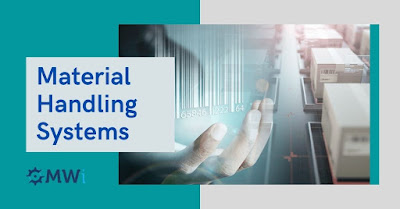COVID-19 Affecting Parcel Rates and Parcel Commitments in 2021
The parcel market is nevertheless suffering from a capacity shortage, owing to the rapid development of B2C shipments. For both carriers and shippers, this has resulted in greater shipping and operation expenses, prompting carriers to introduce "peak surcharges" to assist pay their increased costs.
Such tendencies have been present from the start of the epidemic and are predicted to persist until additional vaccines are disseminated and administered to the general public in the United States.
The parcel marketplace will continue to face a climate that is more advantageous to parcel carriers until more consumers return to some form of normalcy.
When Peak Season Lasts Throughout the Year
The peak season for carriers lasts roughly six weeks per year. Carriers have been running at peak season pace for several months due to COVID-19. This degree of capacity use in the small package network has never been seen before, and carriers were clearly unprepared. As a result of the large increase, carriers that introduced COVID-19 surcharges faced management hurdles, posing new cost of material handling solutions and management concerns for shippers.
It's not always easy to track the cost impact of these levies. UPS increased the cost for difficult-to-handle items by $31 and added a $0.30 charge for residential and SurePost items (e.g., extra-large boxes). FedEx put its own surcharges on large shippers, charging $0.30 for express and ground home deliveries, as well as $0.40 for SmartPost deliveries.
Ecommerce Shipping Best Practices w.r.t Parcel Delivery
Assemble the right team: Every department in your company has a role to play in making shipping for your online store a success.
Establish clear objectives: Do you want to raise your profit margins? Why not expand your horizons? Define your objectives and track your progress against them.
Pick a shipping strategy: There are four primary choices, and free delivery isn't always the best option.
Take the risk: Try it out and see what happens. That is the only way you will improve.
It's time to put your eCommerce shipping plan into action now that you have the correct team in place, your goals defined, and your methodology (or approaches) chosen.
The roles and responsibilities of each team member or team leader should be clearly defined. You don't have to complete everything at once, but everyone should be aware of their responsibilities at all times.
Maintaining Profitability for Parcel Commitments
For most businesses, the most critical supply chain deliverable is speed. They want to move volume to the end user in order to achieve speed at a reasonable price. Many companies are also:
Investigating prospects for speedier expansion or service into certain markets.
Direct-to-consumer drop shipment
Shifting gears to meet Amazon Prime standards, which went into effect in February 2021.
Managing these complications can be a significant hassle, especially if logistics isn't your primary business. To serve this customer-centric business world, more organizations are turning to third-party logistics providers (3PLs) for speedy, cost-effective solutions.
Third-party fulfillment enables businesses to easily scale up to meet demand. It also enables a more flexible fulfillment environment that can be adjusted up or down depending on the volume of freight passing through the facility.
A 3PL can also assist you in laying out a master strategy ahead of time, which you can then change if the rate rises, surcharges, and other variables come into play.
What Impact Do Market Conditions Have on Parcel Delivery?
Throughout the COVID-19 pandemic, the shift to eCommerce has unquestionably impacted service. The way carriers handle this imbalance is fast becoming a differentiator. FedEx is going all in one Ecommerce, extending weekend services and expanding its lead against UPS Ground Residential in terms of time-in-transit.
Better usage of existing assets has resulted in increased capacity without the need for large capital investments. FedEx made room in its network through high-profile breakups, most notably with Amazon, as part of its commitment to be the SMB Ecommerce carrier of choice.
Demand for last-mile residential delivery has surely increased as e-commerce has grown. As a result, we've witnessed not only greater shipping rates and delays, but also capacity constraints in the form of fewer weekly pickups and equipment restrictions imposed by UPS and FedEx on select carriers.
As a result, parcel shippers have suspended "delivery assurances," and delivery times have increased on average.
Expert Advice for Parcel Services
You'll be left behind if you don't aggressively seek capacity guarantees, create partnerships and prices with several carriers, or work on continuous and incremental cost reduction and improved time-in-transit.
Many businesses face an existential threat: the last thing you need when your consumers demand rapid, free shipping is a 25% fee hike or a backlog of parcels in a warehouse waiting to be picked up by a carrier service that has capped your volume.
Instead, it is recommended that shippers look into package consolidators, regional carriers, and the USPS, as well as order management systems and multi-carrier execution solutions. Additionally, follow Amazon's lead and shift your goods closer to your customers for faster, more cost-effective inner-zone delivery.
Many shippers would be prudent to consider third-party warehousing and fulfillment options, as only a handful can afford to own and manage their own single-use fulfillment centers.
Wrapping It Up
Risk management has never been more crucial for parcel shippers, particularly large parcel carriers. Huge cost hikes, as well as volume restrictions, have ruined several significant shippers.
As developments are fast emerging, parcel shippers must monitor the market on a daily, weekly, and monthly basis, and they must prioritize solid data as essential to properly operating their operations. It's hard to make effective decisions without solid data, and far too many shippers still don't prioritize it.
COVID-19 ushered in a whole new era of small package delivery, particularly in terms of the hidden expenses associated with annual increases in parcel prices.
In the end, the pattern from year to year is the same—understand your freight and engage with multiple providers to discover the greatest deal and what works best for your company.




Comments
Post a Comment